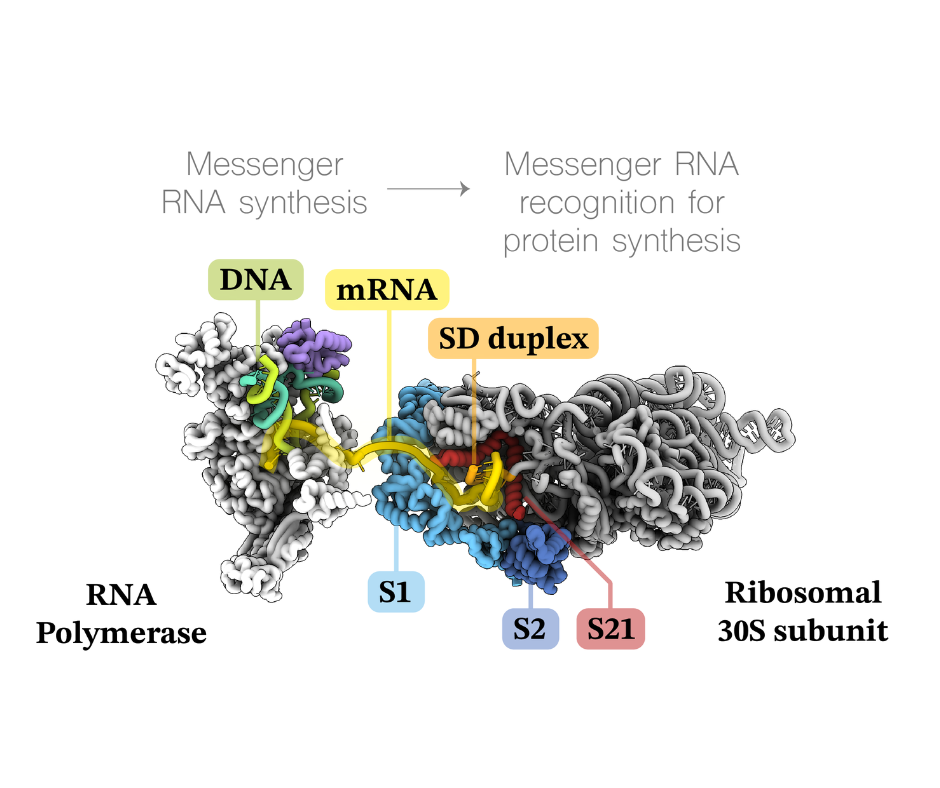
An international research collaboration has shed new light on the molecular basis of gene expression, the fundamental biological process that underpins how all organisms use their genetic information.
The team used an advanced microscopy technique to capture in unprecedented detail a critical moment as genetic information is translated into the proteins that form nature's structures and biochemical processes.
"Our research reveals how these molecules work like intricate machines. I am always amazed that it is possible to reconstitute such an intricate and biologically fundamental process in a tube in the laboratory," said Dr Michael Webster, a group leader at the John Innes Centre and one of the authors of the study which appears in Science.
"It is particularly exciting to have the opportunity to use powerful imaging techniques to answer questions that researchers have been interested in for a long time," he added.
The findings present opportunities for the research community to study how bacteria respond to their environment and, due to parallels in the chloroplasts, how plants adapt their photosynthetic activity to meet their needs.
Proteins are made by decoding the genetic information stored in DNA. For decades, researchers have been trying to understand how the information is copied from the nucleotide sequence of genes to the amino acid sequence of proteins.
DNA sequences have no capacity to act on their own but instead express themselves in the form of protein structures and biochemical activities, hence the name gene "expression."
One central molecule involved in gene expression is the ribosome, which is a molecular machine that reads a transcribed copy of genetic information, called the messenger RNA (mRNA), to make a new protein.
While much is known about how the ribosome decodes mRNAs, a process known as 'translation', a key outstanding question was how the ribosome first finds the mRNA it will decode.
To find answers to this question the team imaged ribosomes that were purified from bacteria and assembled with other components into states that mimic their encounter with an mRNA.
Using cryogenic electron microscopy (cryo-EM), they built atomic models of the ribosome-mRNA assemblies. This enabled them to visualise the process in great detail.
It was known that bacterial ribosomes can be brought to mRNAs by as many as three molecular interactions: an RNA sequence called the Shine-Dalgarno motif, a protein that binds RNA, called S1, and the enzyme that produces the mRNA, called RNA polymerase.
Whether these interactions can cooperate to deliver the mRNA to the ribosome was unclear.
This study revealed how coordination can occur between these ribosome-mRNA interactions. It reveals a pathway on the surface of the ribosome that the mRNA can take to reach the place where decoding happens.
The collaborative project advances a decades-long effort by the field to understand how gene expression occurs at the molecular level, shedding new light on how a single but critical event in the pathway occurs.
Dr Webster continued: "The surprising finding is that there really is a mechanism that has evolved to help mRNAs be delivered to the ribosome for translation.
"It was previously clear that the ribosome must somehow find the right place on the right mRNA to begin protein synthesis. To me, this suggested a potentially very long search before the molecules interact in the necessary way.
"I was surprised how clearly our structural models show that the bacterial ribosome can make a path for the incoming mRNA. This molecular arrangement would clearly make the job of finding an mRNA to translate much easier."
The molecular mechanism revealed is also relevant to chloroplasts in plants, which are descendants of bacteria that have become plant organelles.
The Webster group intends to build upon this new understanding of bacterial-type gene expression to examine its contribution to the production of photosynthetic proteins in the chloroplast. This area has relevance to how we might develop crops better adapted to climate challenges.
The collaborative study involved the coordinated efforts of experts in cryo-EM at the John Innes Centre and the IGBMC (Strasbourg), experts in single-molecule kinetic analysis at the University of Michigan, and experts in structural proteomics at the Technische Universitat (Berlin).
'Molecular basis of mRNA delivery to the bacterial ribosome' appears in Science







